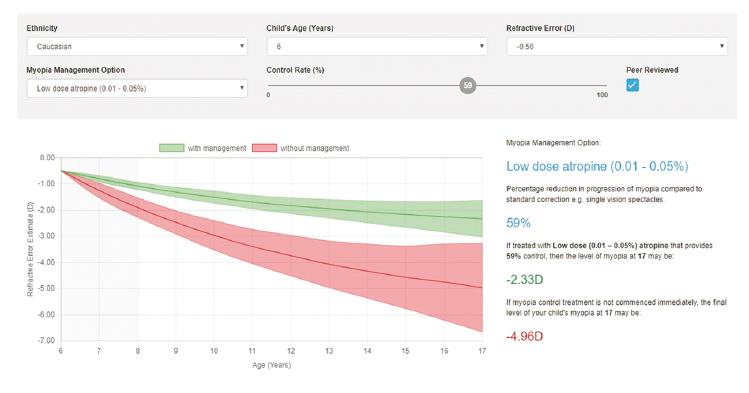Atropine is of interest to eye care professionals for a number of reasons. Firstly, it has an interesting history. Its name is derived from the Greek atropos (meaning inflexible or unchangeable) and relates to its long-lasting effect. Indeed, it has links with Atropos, one of the Fates in Greek mythology whose wielding of scissors could sever the thread of life – a clear reference to its high toxicity. Its fatal toxicity if consumed has long been known as it is the active ingredient in the berries of the deadly nightshade plant. The juice from this plant was widely used as an eye drop in mediaeval times to cause dilation and therefore increase the attractiveness of the user. The alternative name for the plant is belladonna for this reason.
Atropine is similar in structure and action to scopolamine, though the latter has greater impact on the central nervous system and was used as a ‘truth drug’ in the war (as Dick Barton fans will recall).
Pharmaceutical action
Atropine acts as a competitive antagonist at both peripheral and central muscarinic cholinergic receptors. In the eye, these receptors are found both on the ciliary muscle and the iris sphincter muscle and are normally activated by acetylcholine under the control of the parasympathetic nervous system. Acetylcholine causes pupil miosis and ciliary contracture so blocking the receptors with atropine results in cycloplegia and dilation. The drug has a much stronger bond to receptor sites than other available anti-muscarinics, such as cyclopentolate or the weaker still tropicamide, and so its action (in 1% and 2% concentrations) takes several days to initiate and lasts for up to two weeks.
Many of us of a certain age remember when atropine was available as a longer-acting cycloplegic drug. As the most toxic drug available to optometrists at the time, its use tended to be within the hospital eye service where it was available both in drop form (1 and 2% concentration) or as an ointment (1%). We were taught first aid action if atropine poisoning was suspected (tannin in strong tea helped) and also that the depth of cycloplegia that resulted would likely require some degree of tonus allowance before the final refractive correction was made up.
Because of its potential toxicity, atropine has, for some years now, only been available to additional supply or independent prescribing optometrists in the UK.
Myopia therapy
Deep cycloplegia has shown some effects in reducing myopia progression. Donders was the first to recommend atropine as a treatment for myopia when he suggested it for suspected spasms of accommodation in myopic patients, way back in 1864. High dose atropine is currently the most effective therapy for myopia control. This is borne out by reference to the online Brien Holden Institute Myopia Calculator (figure 1).

Figure 1: Predicted slowing of myopia with 0.01 to 0.05% atropine (Brien Holden Vision Institute myopia calculator)
Recent clinical trials have also demonstrated that low-dose atropine eye drops, such as 0.01%, result in retardation of myopia progression, with significantly less side effects compared to higher concentration preparation.1 However, there remain a proportion of patients who are poor responders, in whom the optimal management remains unclear. Proposed strategies include stepwise increase of atropine dosing, and a combination of low-dose atropine with increased outdoor time. 2, 3
To minimise the adverse effects of atropine, many researchers have used a weaker anti-muscarinic agent called perenzipine. However, the twice-a-day dosage required for pirenzepine (as opposed to atropine’s once-a-day dose) has seen a resurgence of the atropine in lower concentrations to be used in myopia treatment.
The future
At present, there is no low dose 0.01% atropine available in the UK. That said, most researchers in this area predict that such a drug will become available soon. It may even be available to entry level optometrists, though at present this cannot be confirmed. Definitely a case of ‘watch this space’.
References
1 Pei-Chang Wu et al. Update in myopia and treatment strategy of atropine use in myopia control. Nature, June 2018, doi.org/10.1038/s41433-018-0139-7
2 Chia A et al. Atropine for the treatment of childhood myopia: safety and efficacy of 0.5%, 0.1%, and 0.01% doses (Atropine for the Treatment of Myopia 2). Ophthalmology, 2012, 119, 347-54.
3 Galvis V et al. Topical Atropine in the Control of Myopia. Med Hypothesis Discov Innov Ophthalmol. 2016 Autumn; 5(3): 78–88.
